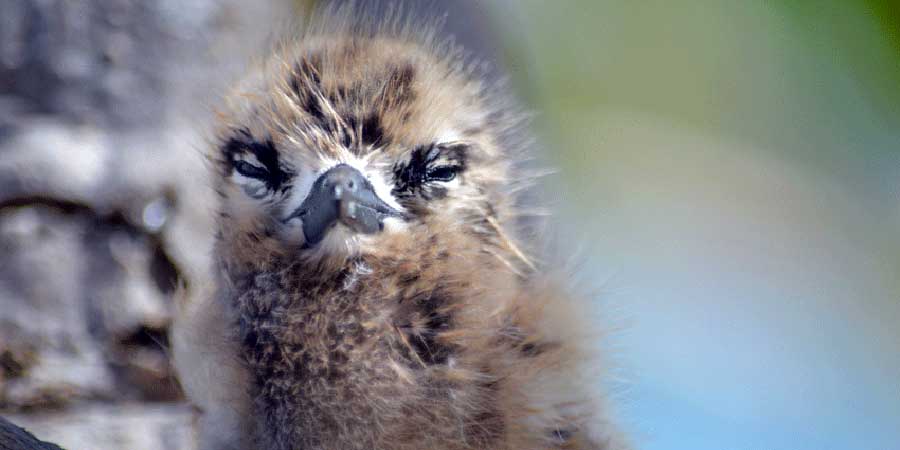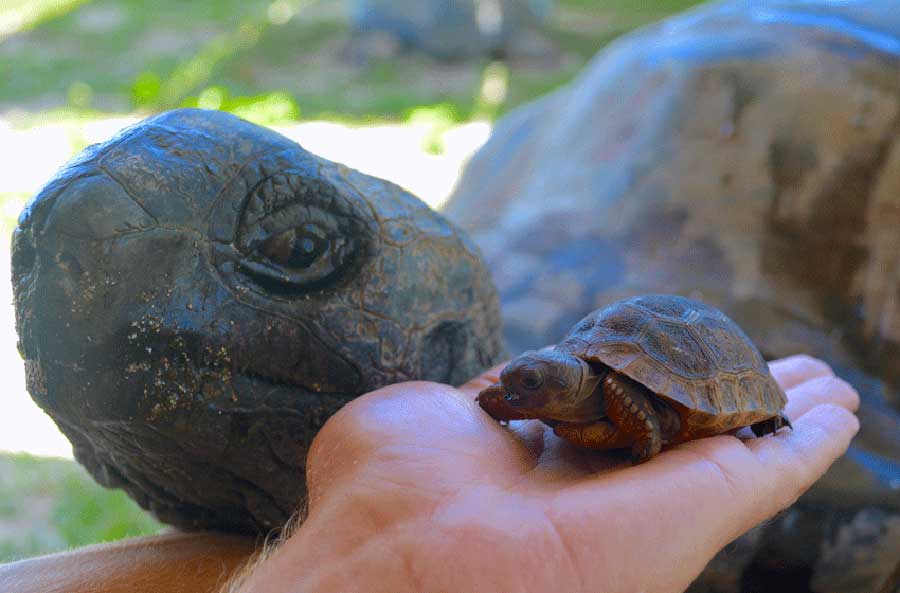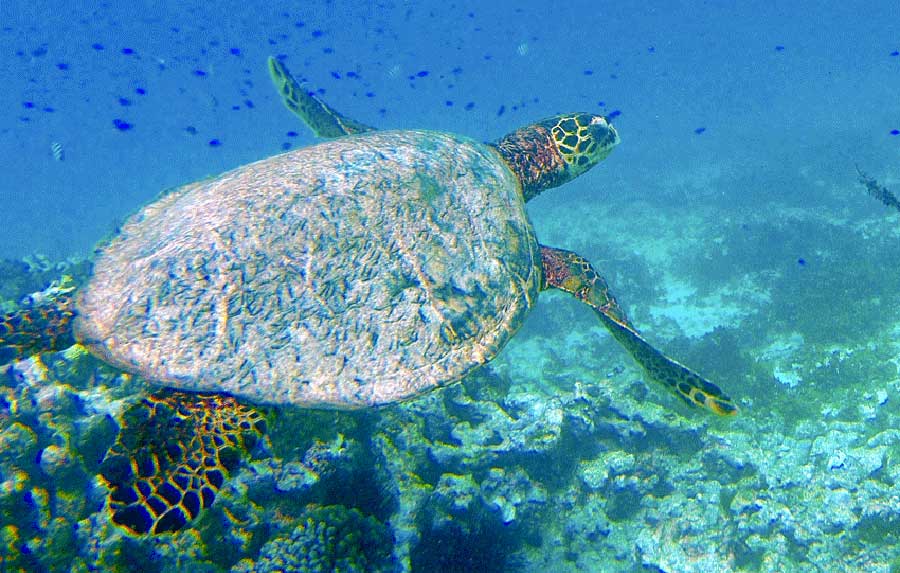
In my opinion, the main ingredients for a great photograph are patience and luck. Patience goes hand in hand with the passion for photography. Luck is more a matter of increasing your chances of encounter and being ready to click the shutter button at this sacred moment, when all the factors suddenly come together for you to take a picture worth keeping forever.
I was a volunteer with Nature Seychelles, working on Cousin Island Special Reserve for a period of six weeks. I have also just completed Nature Seychelles’ Reef Rescuers Training Program which ended in August. Being fond of photography, I was determined to spend my free time using my camera capturing the varied wildlife of the island. As a marine biologist my first wish was to visit the marine protected area around Cousin, which covers the 400 meters of water surrounding the island.

Just as I had expected, the coral reefs are heavily damaged by past warming events and the 2004 Indian Ocean tsunami, as are 97% of the corals around the granitic islands of Seychelles. On the other hand, thanks to years of protection from fishing the fish within the reserve are abundant and diverse. By virtue of being protected under Seychelles law, the waters around Cousin are a no-take zone which means that it is illegal to capture any marine species around the island.
On my first snorkel, I had the chance to spot a couple of sea turtles, a guitar-shark and a white-tip reef shark along with countless fish. That list was later garnished with eagle rays, stingrays, a nurse shark, a grey reef shark and several hump head parrotfishes. Unfortunately, I was not able to take many shark pictures. Meeting with a shark feels so ephemeral and unique that suddenly, photography becomes trivial and what matters most is the memory.

Life being so abundant on Cousin Island Special Reserve, photographing birds, reptiles and crustaceans proved to be much easier than shooting fish and sea turtles. Birds perched on almost every branch, some on the forest floor and other yet on rock surfaces. There is a vibrant and thriving reptile population on the island as there are crustaceans. From skinks to tortoises to crabs, there are many shots to choose from.
Mosquitoes too, were abundant and, after a few days of heavy rain, the forest was swarming with them. These little creatures became the number one enemy of my artistic ambitions. To my surprise, my tolerance for mosquitoes eventually improved and I grew very fond of walks in the forest. After all, how often in my life will I get so close to endemic seabirds of Seychelles? When will I ever be able to observe a Fairy Tern chick fall asleep? Will I ever again feel the thrill to discover a giant Aldabra Tortoise only a few days old? Probably never. Cousin has given me a once in a lifetime experience that I will cherish for many years to come.
Louise Malaisé

